StoryADay May is just around the corner!
Here are your graphics for 2023
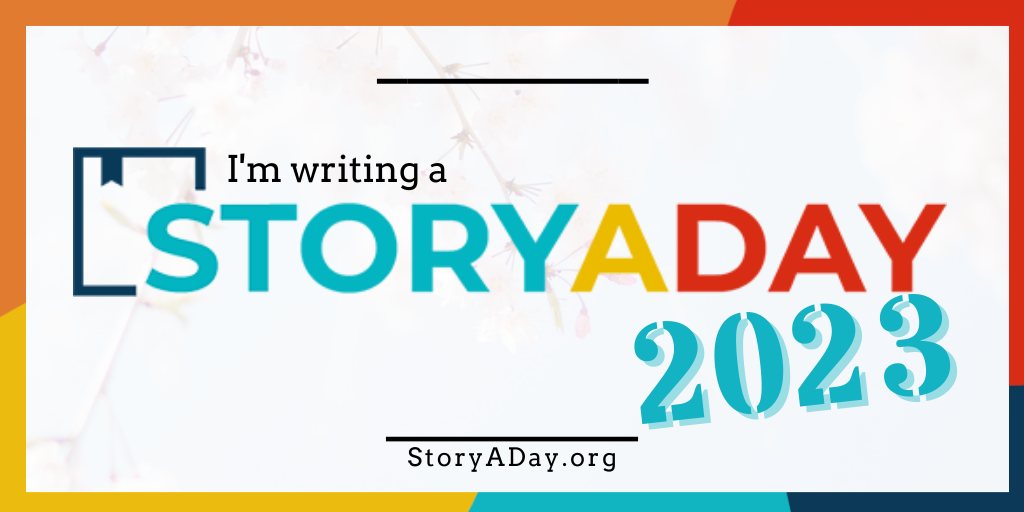

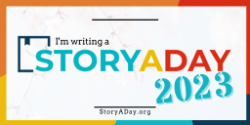

Save these images and use them anywhere you post about your StoryADay May progress!
StoryADay May is just around the corner!
Here are your graphics for 2023




If you’re following along with my StoryAWeek newsletter we’re talking about location this week.
Here are some links to things I talked about in the email.
Million Dollar Outlines by David Farland
Nightmare at 20,000 Feet by Richard Matheson
All links above are Amazon affiliate links
Download these badges for all your social media/blog needs
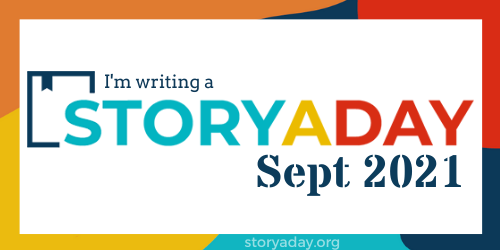
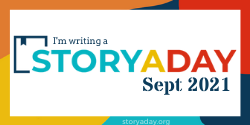
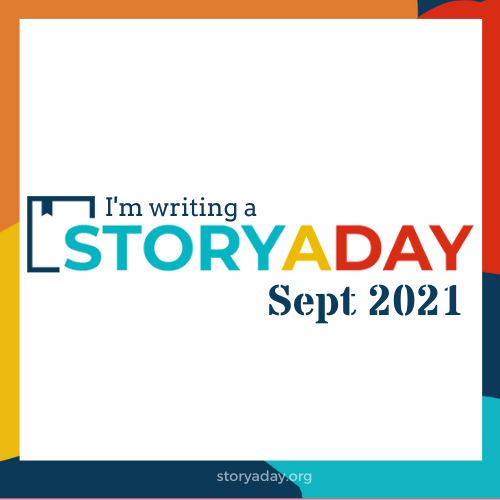
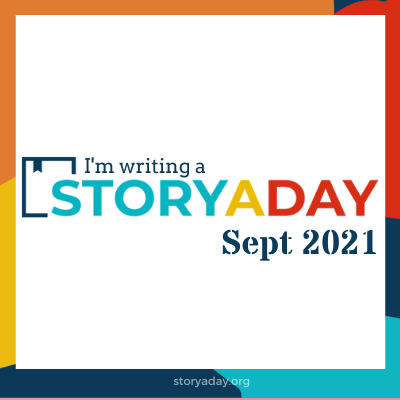
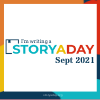
Use these graphics to celebrate your participation, wherever you like.
And why not pick up some swag to keep you hydrated, or to show your StoryADay pride?
Right-click to download the ones you like:
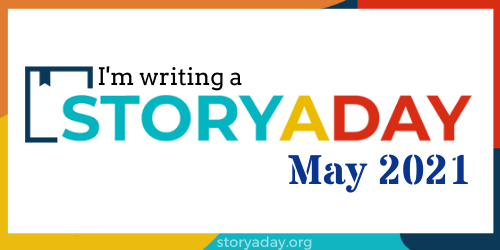
Grab these graphics and splash ’em all over social media to tell people you’re writing a story a day in September:
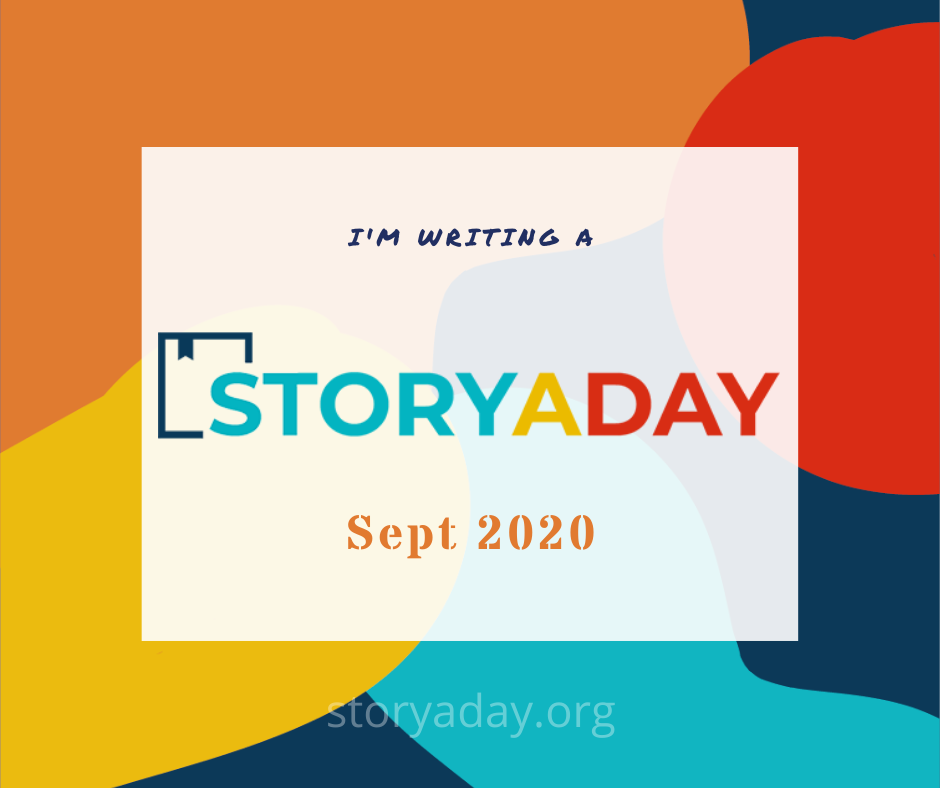
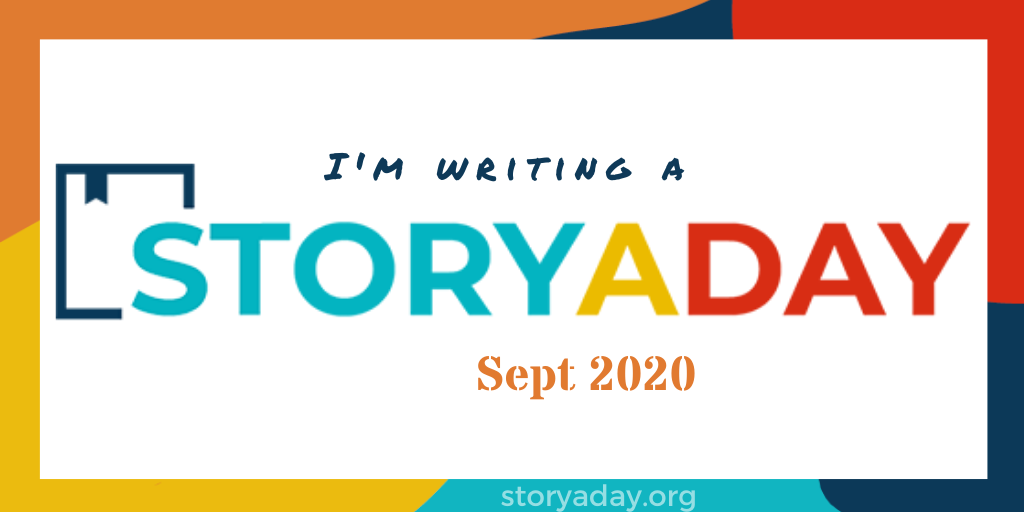
Download and use these badges anywhere, to tell people you’re taking part in StoryADay May 2020 – the 10th Anniversary Edition!
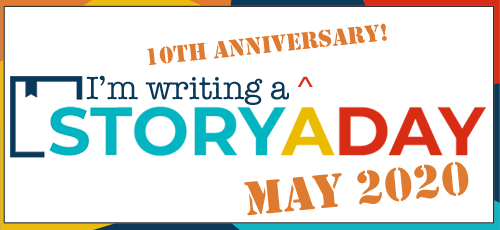
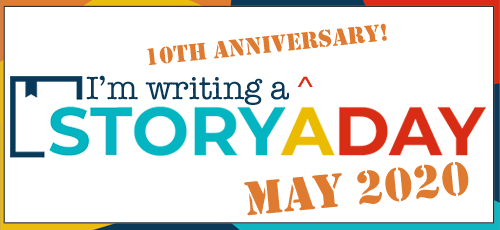


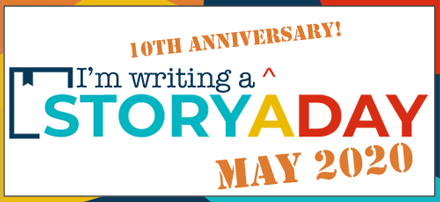
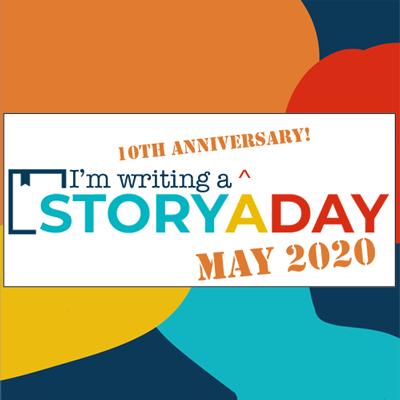
Plot happens outside, but story happens inside
Donald Maass, The Emotional Craft of Fiction
For people to love your story, they need to love (or love to hate) your character.
The most beautiful writing in the world, the most exciting action sequence in history, neither of these will make people love your story.
But a compelling character will steal their heart, sneak into their memory, and make them come back to your writing over and over again.
How do you make your character compelling without spending too many words tracing their inner thoughts? How do you balance character growth with action?
None of us step out into the world in the morning as a fresh new creation.
We walk out of the door with hang ups and passions and prejudices and ingrained behaviors, all of which come from a lifetime of having experiences and reacting to them.
Lisa Cron, in her excellent book Story Genius, talks about this brilliantly:
You have to know your character’s childhood damage, she says, and the protective behaviors they created. If you can set your story at a point in their life when those behaviors no longer serve your character, you have automatic conflict built into your story (and conflict makes stuff happen!)
Top Tip: do some ‘discovery writing’ about your character before you ever try to write the actual story. It will make your first draft go soooo much faster.
Resources:
In our quest to make readers love our protagonist, we can forget to give them flaws.
But how do you give them a flaw, without making them unlikeable?
The best resource I’ve come across came from the podcast Writing Excuses, where they talk about playing with three different characteristics as if they were sliders on a mixing board. Your character can be competent, proactive, and sympathetic, but they can’t be 100% (or 0%) of all three at the same time.
Contractors say, “You have have a job done well, fast, or cheap. Pick two.”
At any one moment in a story, a character can be extremely competent, extremely proactive, or extremely sympathetic. Pick two.
And then play with those levels throughout the story. (Think about how Hermoine Grainger changes over the course of the first Harry Potter book. At the start she is the most competent and proactive of the three friends, but nobody likes her. By the end, she has given up some of that proactivity and learned to lean on her friends. She acknowledges that Ron is more competent at wizard chess, and lets Harry be the one to face the last big challenge…and we like her a lot more, for it.)
Top Tip: Playing with character competencies is a great way to make them more or less sympathetic without having to give them a ‘tragic flaw’.
Resources:
In critique groups I usually hear two opposing critiques of character, depending on the writer’s natural tendencies:
Whether you naturally write lots of action, or spend a lot of time dwelling on inner feelings, a good writer needs to be able to balance action and inner conflict, to create compelling characters.
One of the best ways to do this is to turn off the inner dialogue and show your character taking actions or interacting with physical objects that
For example, in the beginning of the movie Die Hard, a watch-word for action-based storytelling, John McClane picks up a picture of his happy family from a desk in his wife’s office…and winces.
In that moment (right before he gets embroiled in the explosions and flying bullets) the viewer remembers that this is not just a wise-cracking action hero. He’s a man who is losing his family and isn’t sure how far he’s willing to go, to put it back together.
That’s the question the rest of the film answers.
And it’s the reason we, as viewers, care.
Top Tip: Turn off the inner dialogue and give us a moment, filled with all five senses, where your character demonstrates their emotions, on the outside.
Resources
All of this kind of craft-based instruction is useful for developing your writing…but only if it doesn’t slow you down while you’re creating first drafts.
If you’re writing the first version of a story do not stop to worry about ‘showing not telling’ or whether your character is sufficiently proactive in this moment.
All of this can be fixed in the rewrite.
And one of the best ways to figure out what’s working and what still needs work in your story, is to show it to other readers.
Perhaps the idea of a critique group terrifies you. Or maybe you’ve been in groups in the past that were frustrating, or just ‘meh’.
If that’s you, I have a gift for you: a free guide to critique groups, including:
Don’t waste time being afraid of feedback, any longer. It’s the single most important thing you can do to get your writing closer to the point where you can really begin to delight readers and build a raving fanbase.
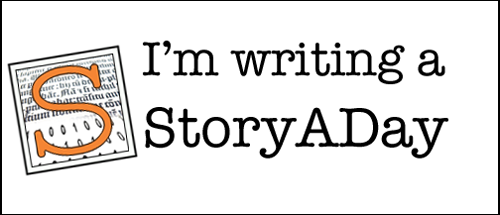
[500 x 230]
Are you in?
Use the graphics proudly to announce your participation in this May’s challenge. Right-click to download, then post them on your blog, as your FB or Instagram profile pic, whatever!
500 x 500 px
This time next year, you could be staring at a list of achievements that are directly related to the goals that matter to you…
Listen to the podcast episode that goes along with this post:
I love the idea of a fresh start, don’t you?
It doesn’t matter when it happens (New Year, the first day of spring, the start of a new academic year), I’m always ready with my list of “this time it’ll be different” resolutions.
You know what I’m going to say, don’t you?
I’m excited to follow through on my plans for about three days.
Then I start to force myself to stick to the new regime.
Then I start to miss a day here or there…
…and suddenly it’s June and I’m flipping through my journal and I find that massive, guilt-inducing list of Things I’m Going To Do Differently This Year, and my shoulders slump, and I spend the next three weeks in a slump, wondering why I can’t get anything done.
Sound familiar?
This month’s theme here at StoryADay is: Make It Better.
Here’s some recommended reading from around the web on various aspects of making your writing life better.
Here are three articles on how you can make your writing better to read, easier to sell, and impossible to put down.
Confessions of A Slush Pile reader – really useful article on why one reader rejected stories from a publication (even if your’e not submitting stories to publications, this is a great list of ‘what will put your reader to sleep’ and help you improve your writing)
Hunting Down Story Goals Plot holes are deadly to your story, but just as deadly are the other ‘holes’ that you might not be thinking about. This article tells you what they are and offers up a handy, printable template for keeping track of the important details. This might be overkill for short-short stories, but could be really useful for longer short stories, novellas and definitely for those of you working on novels.
It’s A Story, Not Just A List of What HappensIn which I offer up some writing advice gleaned from watching an interview with Trey Parker and Matt Stone — of South Park fame, among other things. [quick read]
All writing is not created equal, argues James Scott Bell, while Ruthanne Reid shares advice for not quitting even when you can’t write.
The Five Modes of A Writer’s Life James Scott Bell talks about the five types of writing day you might have (from the inspired ‘flow’ state, to the solid reliable quotas of the “pro”). This is an encouraging article to help you make your commitment to your writing better: understanding that every day is not going to be blissful, really helps you stick to your priorities!
3 Steps to Writing When Life Goes NutsWe all have them: weeks (months?) when life gets away from us and writing seems impossible. This encouraging article from Ruthanne Reid commiserates, then gives you some concrete steps to take, to keep your writing life alive.
Two tools to help you revise without drowning in a vat of your own words (and tears).
The 7DayStory – This email course, that I created with Gabriela Pereira of DIYMFA, takes you through the process of writing, REVISING and releasing a short story in seven days. It’s free and, if you’re looking for a methodical way to work through the revision process, pay particular attention to days 3–6
Climbing Mount Revision, One Step At A Time – The guest post that began the 7DayStory process, by Gabriela Pereira of DIYMFA.com
Critique is a funny thing. If you get lucky, you find a great group and you’re all mature and experienced. If you’re not so lucky, you get newbies or jerks. If you’re thinking of starting a group (or want to make yours better) start by showing them this video: Professor Puppet’s Writing Critique instructions.
This short, funny video by my buddy Gary Zenker, is a great introduction for anyone new to critique, or who needs a refresher Air this video at the start of your group, to set the ground rules in an entertaining way!
How To Ask For — And Act On — FeedbackIf you have other writers willing to read and critique your work it can be really valuable. Here’s are some of the right, and the wrong ways, to deal with feedback.
I hope these evergreen articles will help you Make It Better this month and in the future.
Do you have any tips for things that have made your writing or your writing life better? Share in the comments!
If you want to read more like this, let me send future articles straight to your inbox:
Right-click to download and save these images to your hard drive. Then you can use them on social media, your blog, your Facebook page, wherever you like! Enjoy!
[Twitter inline graphic 440 x 220]
[100 x 46]

[150 x 69 px]

[200 x 92 px]

[ 250 x 115 px]
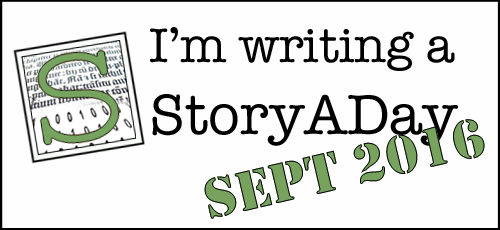
[300 x 138 px]
[500 x 500 px, Facebook profile pic]
Every word of that title is important, so go back and read it again.
Doesn’t that sound appealing?
The first time I came across Stuart Horwitz, I was struck by the way his writing instruction bridges the gap between Pantsers and Plotters, and how he provides actual processes and methods for getting from ‘wannabe writer’ to ‘someone who can polish and finish their work’.
His latest book comes out today and provides a powerful, user-friendly guide to getting work done, while LOVING what you do.
It takes you through the process of writing a book in three drafts and includes extras like PDFs and stop-motion animated videos that illustrate the lessons in the book. It’s really delightful and powerful stuff.
I had a chance to interview Stuart Horwitz about his books, his editing work and his own writing this week, and he had some great advice for us, as we work on short stories and perhaps move on to our longer, book-length projects.
JD: Why did you want to write this particular book? What problem are you trying to help writers solve?
 SH: We only have a limited number of books in us — mostly because our time here is limited — and so it becomes a matter of figuring out what are the best books for us to work on, and how we can bring the most excitement to that work and then, how we can get through it, while we still have that energy and affection for it. (Like I say in the subtitle “while you still love it”.) And then move on to the next thing.
SH: We only have a limited number of books in us — mostly because our time here is limited — and so it becomes a matter of figuring out what are the best books for us to work on, and how we can bring the most excitement to that work and then, how we can get through it, while we still have that energy and affection for it. (Like I say in the subtitle “while you still love it”.) And then move on to the next thing.
Time’s ticking.
And I know this very well because, little-known fact: I trained as a mortician. I walked out of there knowing for a fact that I was going to die. We all are.
Before that time comes, how about we accomplish some shit, you know? That’s all I’m saying.
JD: So how do we do that?
SH: Having a ritual while you write is crucial. There are times when it’s not possible [to fit in everything from your ritual]. We have to recognize that its value doesn’t lie within the ritual itself, it lies in its ability to bring you to a joyful state. It helps us penetrate beyond appearances and figure out why we’re doing this…what we’re doing.
And every writer has to have a process. It doesn’t have to be my process. You can get some from me, four from this other person, and make up 2 of your own and there’s your process. But if you stick to it, it will help you on the less-excited days.
JD: You take a very moderate approach to the whole ‘Write by the seat of your pants’ vs ‘Outline everything’ debate. You sound terribly reasonable.
SH: We like to call it The Middle Way in Buddhism.
There’s always a reason to bend the rule and there’s always a reason to practice discipline.
JD: The thing that helped me immensely, every time I read your books, is the concept of “Knowing What Draft You’re In”. Can you explain that a bit?
SH: The first draft is just getting it down – The Messy Draft. The second draft is the Method Draft which is about making it make sense. The Third Draft is the Polish Draft which is about making it good.
So, when you sit down to start, it’s all First Draft.
And when you do action steps to figure out what you’re actually working with and then take the best parts up a level, it becomes the Second Draft.
And then you go through your beta-reading process, bring in outside input, and use that to get to your third draft, which is your polish draft.
And I’m talking about a real draft. I’m not talking about tweaking. Like: these five scenes are all going in trash. And: I need scenes that aren’t here yet. Adding three commas? That’s not a draft. That’s just ornamentation. That’s chasing perfection.
The secret to the three drafts is that when, during the second draft, you uncover holes and start writing that scene, remember that new scene is in its first draft. If you stare at that new piece and say, “Why aren’t you as good as everything else already?” it’s going to be madness.
Keep in mind, every time you encounter new material it’s first draft.
JD: How do you know what to work on next, in revisions?
SH: There are action steps [in his books – JD] that you can take between drafts which will reveal to you what you are working on, more clearly.
Mapping the journey we’re on at the same time that we’re on it, gets kind of dizzying/confusing.
We need a separation between the viewer and the subject matter.
I’m a big fan of grids [Here, I refer you to Stuart’s books and his website because this is a big, meaty and really useful subject – JD]
JD: How can a short story writer avoid overwhelm at the thought of writing a novel?
SH: I like to break it down in to writing sessions. The question is “how many writing sessions does it take”? From my own experience: I have a short story that is probably one session away from nailed and that is Number 5.
So it’s the same concept. My second book, Book Architecture Method, took 60 writing sessions.
You show up to one of those 60 sessions, you necessarily have to reduce the scope of your expectations. What am I doing today? I’m not writing a novel today. I’m writing a part of a chapter in a draft today.
I’m going to take the rest of that junk out of my mind and I’m going to sit down and write, and I’m gonna write what I was thought I was writing, and I’m going to discover new stuff, and I’m going t write stuff that isn’t good, and I’m going write stuff that is good, and I’m going to keep going, and I’m going to get to the end of this session.
When I get to the end of the session, if I’ve made progress, that’s a win.
JD: It’s easy as writers to judge ourselves as having failed. You idea of grids and process and ritual take the emotion out of the revision process.
SH: Self judgement is a very complex phenomenon and has many many faces. There may be a reason why that never really goes away: a tension exists where our need to constantly slay that dragon helps us bring forth our best work, or brings us to our edge. But the nagging, griping voices in our heads are, for the most part, not contributing to the forward motion.
You have to believe in yourself first. That is probably the hardest thing about writing. It’s probably one of the harder things about living, so practice in one helps with the other.
JD: I stress finishing stories during StoryADay. Your books are all about helping writers finish books. Why do you think so many writers never finish their projects?
SH: There are a lot of reasons why people don’t finish. [Sometimes] there’s some pretty deep psychological stuff going on. Somewhere there was a message that was encoded that ‘you are not good enough’.
Then the people who didn’t get that message, and who actually suck a lot worse with you, are filling up the airwaves with what they did. And now we’re having to read ten books by them before we get one book by you.
The fact is if you have 10 people who are reading what you have to say you can write something great. you can even write something great if one person is listening to you.
———————————————————
This book is a fabulous introduction to Stuart Horwitz’s method for writing and revising works of any length, and I can’t recommend it enough. Pick up a copy today.
Here are your “DID IT!” badges – NEW, for this year’s StoryADay.
You can use these badges anywhere online. You don’t have to have written 31 stories in 31 days — just decide if you achieved/leaned anything of worth during StoryADay 2016, and wear your badge with pride.
(Right-click to download. Use inline on social media feeds, or as user icons, or paste them into your blog’s sidebar. let me know if you come up with something even more creative to do with them. Tattoos, anyone?)
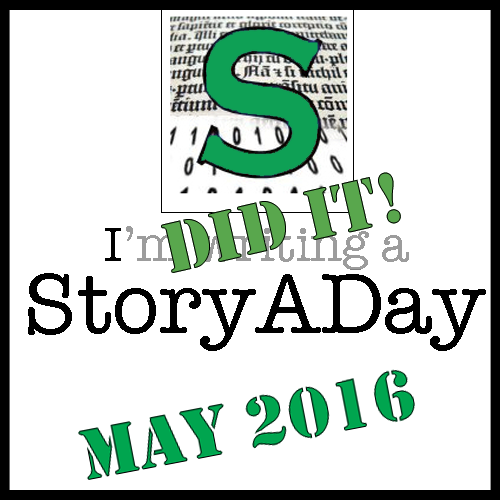
[ 500 x 500 px – Best for Facebook Profiles pics]
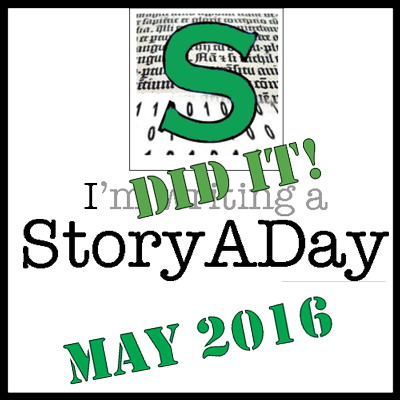
[400 x 400 px – best for Twitter Profile Pics]

[100 x 100 px]
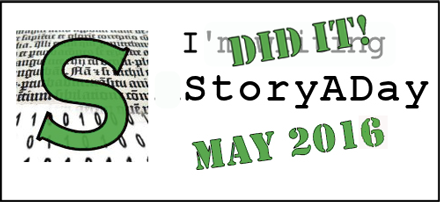
[440 x 202 – Best for in-line social media posts]
[500 x 230 px]

[300 x 138 px]

[250 x 115 px]

[150 x 69 px]
I’ve made a case for logging your word count to keep yourself accountable, to give yourself a pat on the back, to encourage consistency and good writing habits.
But it doesn’t have to be word count.
Setting a word count goal makes sense if you’re working on a novel and want it finished by X date.
It also makes sense if you want to become a faster writer.
It might not make sense to set a word count goal if you’re still struggling to create a writing habit. Or if you’re writing flash fiction.
And what if you’re int he editing (or marketing) phase of a project, but still want to feel productive?
In these cases, you might want to to track the number of days on which you worked, to see how your writing practice is becoming part of your life.
Set a goal for the number of days a week that you will Write Something (or Work on Project X).
If you like to keep your logs in a more tangible form:
At the end of the month, step back and gaze at the ‘heat map’ of your work progress. Hopefully there’ll be enough ’stickered’ days to make you smile. If not, make a commitment now to do better next month.
If you can make an unbroken chain of those days that’s great. But bewarE! Setting so high a bar can backfire. What happens the first time life gets in the way and you miss a day? You feel terrible. You get demotivated. You quit.
Rather, I’d suggest setting a goal to write on a certain number of days a week.
At the end of the month, look back at your log see how much you achieved and if any patterns emerge (are weekends good or bad for you? Do you write more when you’ve had more sleep? When the kids are in school?). You can see where you might make changes or improvements.
Again, try to not use the log as a weapon to bludgeon yourself with guilt. Use it to analyze and study (and to face) what’s really going on. Try to increase your goal a little from what you actually achieved this month (not some abstract and possible unrealistic ‘ideal’).
Whatever type of log you choose, use it to keep yourself accountable, spur positive changes, and reinforce good work habits.
Because all of these things get you closer to where you want to be: writing.
Are you logging your writing days or word count? What methods do you use, and how do you use it to help you progress? Share in the comments, below!
How I used the StoryADay Word Count Logging tool to write 100,000 words last year, and why you should be logging your progress too!
Do you log your word count?
I’ve been logging my word count (on and off) for the past couple of years. Last year, without really trying too hard, I managed to write 100,000 words of fiction. That was the end of one novel, several short stories (a couple published) and the first half of a second novel.
If I’m so productive, why bother logging my word count, you say?
Come closer and let me whisper into your ear…I’m productive because of the word count log.
Here are four ways logging my progress helped me meet my goals: Continue reading “How I Used Word Count Tracking To Write 100,000 Words”
This week’s Reading Room is a little different: 10 (+1) books to add to your wish list. Enjoy!
I buy this every year and it has yet to disappoint. Curated by high school students and founded by Dave Eggars, this is a collection that is both quirky and keeps me feeling young!

Yes, everyone but British writers (someone idiosyncratically defined, if the reviews are to believed) are excluded from this 2-Volume collection. But I like a little focus in my anthologies, don’t you? (Side note: you might want to complement this with something from the Best American series. I couldn’t, in good conscience, link to their “Best Short Stories” edition because it is so resolutely ‘literary’ and I usually end up hating it, but YMMV. Their Mystery one looks interesting, and I wish they had more fiction genres to choose from.)
There’s nothing quite like reading the well-crafted words of Smart People on Important Issues to inspire you to get back to writing. Lots of essays in here from diverse voices.
This wonderful call to artistic arms was hugely influential in my decision to start StoryADay. Gentle and encouraging it definitely helps you if you’re struggling with the whole permission to write thing. If you think you NEED to be doing stuff for other people before REWARDING yourself with time to write, Ms. Ueland will set you straight….
I haven’t read this one yet, but … Elizabeth Gilbert! Have you seen her TED talk? And she’s fabulous fictioneer in her own right, so sign me up for a copy!
I really bought this to use with my kids, but it turns out it’s a Rescue Pack for adults who have forgotten how to play. There is nothing a writer needs more than to be an Explorer of the World and Keri Smith shows you tons of ways you can have fun out in the real world again, noticing all the little details that fiction requires.
Chuck Wendig at his trademark profane, hilarious, no-nonsense, encouraging best. Not to be missed.
If you haven’t discovered this book yet, it’s well worth a read. It talks about resistance and why we need to break through it.
If you HAVE read “The War of Art” (above) and are sick of bloody Resistance and want to know WHY it’s kicking in and what to do about it…this is the book for you. I received a review copy from the author Mark McGuinness but liked it so much that I’ve bought it again three times to give away (you can enter for a chance to win a copy here). Seriously. Read it.
If I might be allowed a little self-promotion, this book has 60+ ways to break writers’ block and some REALLY nice reviews on Amazon (thanks, guys!)
What would you add to this list? Comment below!
This post is for people who are having trouble getting past the exciting beginning of their story and into (and through) the mushy middle. It works for novelists and short story writers.
Starting a story can be hard. But once you get started, the excitement carries you through some initial world-building, character-developement and scene setting. Then what?
Then, you get stuck, going around in circles, with your characters doing stuff, but not really going anywhere (either literally or plot-wise).
This is the perfect time to outline the next part of your story and start thinking about where you want to go from here. If you hate the thought of outlining, think of it as brainstorming. You do this in your head, if you’re a pantser (someone who writes by the seat of their pants), but sometimes it can be helpful to catch some of your ideas on paper.
If you’re not a natural outliner, don’t go crazy with this. You know you’re going to write something that captures your interest and throw out the outline, or maybe a new character will do something unexpected and interesting. So don’t outline. Just brainstorm a few questions like:
Even if you’re not a fan of outlining, keeping these questions (and the answers you discover) in mind as you write, will help keep your enthusiasm high for your story.
Revisit these questions every few writing sessions, or after every couple of scenes. Map out what needs to happen next to advance your character’s journey. Let future ideas dance around the back of your brain.
Then add another scene to your story.
I’m posting these with the caveat that you should use as few of these as possible and ONLY when you are absolutely, dead stuck. Do not think these will help you if you aren’t actually writing. You must be writing your story for these resources to make any meaningful contribution.
Jill Williamson has a fabulous resource page full of everything from Novel Brainstorming Worksheet and one for short stories, to scene planning worksheets (one and two POVs), to character archetypes, genres & subgenres, even a worksheet for thinking about your characters’ hobbies!
Larry Brooks has a one-page checklist to help you plot out your novel. I find this one a little overwhelming, but if you take it step by step (i.e. write your way to a point when you’re stuck, then consult his list to see what you need to think about for the next quarter of your story) it might be more manageable. You can also find his Character Checklist here.
The Emotion Thesaurus: A Writer’s Guide To Character Expression by Angela Ackerman and Becca Puglisi is one of three books they’ve written (along with the Negative Trait Thesaurus and the Positive Trait Thesaurus) that can help you if your characters are feeling flat.
Book Architecture: How to Plot and Outline Without Using a Formula by Stuart Horwitz. Can’t recommend this enough. It takes a fresh look at how to keep your plot interesting, by examining through-lines of themes and imagery and character traits rather than focusing on the old ‘Plot point I”, “Plot point II” “Dark Night Of The Soul” structure, which I find really unhelpful. This book, on the other hand, make small explosions go off in my brain. If you’re resistant to the idea of outlining, this might be the book to help you keep your story on track, nevertheless.
Million Dollar Outlines (Million Dollar Writing Series) by Dave Farland. Unashamedly commercial in outlook, this book is stuffed with examples (mostly from the movie world) of what makes a compelling story, what readers are looking for (even down to age and gender breakdowns) and leaves you feeling totally convinced that anyone with a modicum of talent and the will to persist, can do this and maybe even make a living at it. Why not you? Hoo-ah! Also stuffed with practical advice on how to make YOUR story sing.
Write Your Novel From The Middle: A New Approach for Plotters, Pantsers and Everyone in Between by James Scott Bell. I found this very encouraging, particularly his insight into what the ‘midpoint’ of the novel really is, and the kind of moment you can write for your protagonist that crystallizes both the midpoint and what comes next.
Motivation for Creative People: How to Stay Creative While Gaining Money, Fame, and Reputation by Mark McGuinness. This book won’t tell you how to write a novel, but it will help you think about all the ways your poxy brain is holding you back, and how to make it work for you, instead. This is not your average ‘rah-rah, tell yourself you can do it’ book. McGuinness uses everyday examples and his background as a coach to show you how different types of motivation work on you. Grounded in academic studies, this is a chatty, accessible and inspiring look at how you can free yourself to create.
The Snowflake Method – From Randy Ingermanson, this is another wonderfully logical way to avoid the whole inverted-triangle, unhelpful story structure plotting that drives me crazy. It helps you focus on the key points of the story you want to tell (which you’ll discover while going through his exercises). It has the added bonus of creating your story summary and proto-marketing materials before you’ve even written it (which is the part most people say they hate even more than writing the thing in the first place).
This works even if you’ve started your novel. I was stuck at the half way point of a novel I’d been tinkering with for years, when I came across this method. Spent a few hours following Randy’s advice and pounded out the second half of the novel in a couple of weeks!
I know you lot are always up for a challenge. A significant portion of the crew here takes on NaNoWriMo each November.
So I have a gift for you.
I’ve created a word-count tracker that dynamically calculates how many words you need to write every day to hit your targets. It works whether you faithfully write 1667 words every day, or whether you binge-write 5,000 then sleep for 48 hours before writing again. Just plug in your numbers and the spreadsheet will tell you your remaining daily average number of words required to hit the magic 50,000.
If you hit the minimum daily number of words required to stay on track, the spreadsheet rewards you by turning the ‘Words Today’ cell a happy bright green.
When you hit the magic 50,000 words, all the remaining “Words This Month” boxes turn green too.
(It’s silly, but it is incredibly motivating to see those little green boxes stack up!)
(as long as you can access Google Drive, that is).
This is a Google Sheets document. That means it’s stored in the cloud and you can update it from anywhere you can log in to Google: on your phone, in the coffee shop, in bed, from your laptop, during meetings (ahem!)
This comes with foolproof instructions including “Where to type” and “Where not to type” and “how to use this again next year/for other projects”.
Download a copy now, (DO NOT REQUEST ACCESS. INSTEAD, CLICK FILE/MAKE A COPY) to your Google Drive (you’ll need a free Google account) and use it with my best wishes for a frantic, fiction-filled month of creativity!
Good luck!
Julie
Taking part in StoryADay May 2015? Let everyone know (and hold you accountable) by pasting one of these badges in your blog’s side bar, or using one of the square images as your social media profile photo.
Right click to download the files. Save on your computer, then upload to where ever you want to use them.
Easily add a StoryADay logo to your FB or Twitter profile pic.
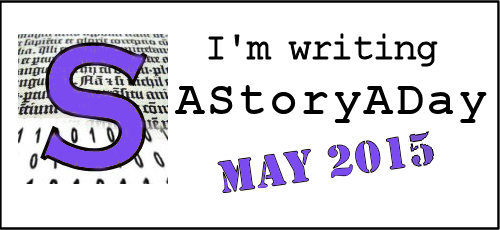
[500 x 230 px]

[300 x 138 px]

[250 x 115 px]

[150x 69 px]
[Twitter Profile 400 x 400 px]

Facebook Profile pic [180 x 180 px]
Google Profile pic [250 x 250 px]
Instagram Profile Pic [161 x 161 px]
LinkedIn [100 x 100 px]
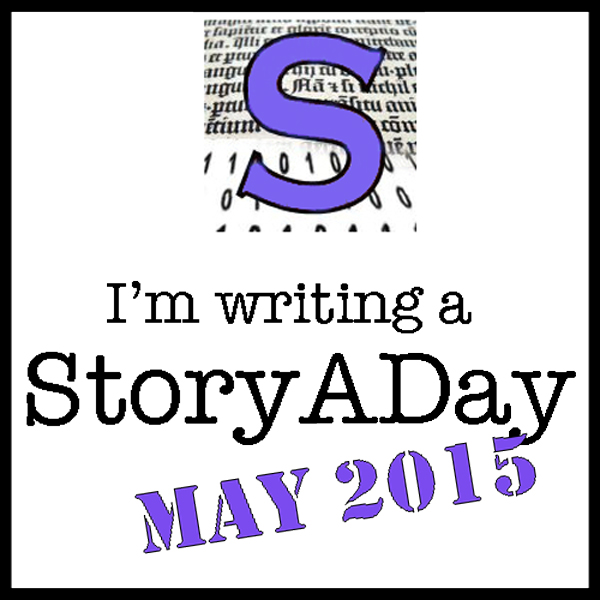
Pinterest Profile pic [ 600 x 600 px]
Best size for in-Twitter images [440px wide]
If you want to add a headshot of yourself to any of these, here’s a background with a ‘hole’ for your headshot. Download and modify in your favourite graphics program.
[500 x 500 px]
Here’s an example:
This is an awesome (and quirky) opportunity for you to have you story published during May. I spoke to organizer, Meriwether O’Connor by phone earlier this month and she told me she’s bringing back an old idea that worked really well when she was publicizing earlier novels. In the age of podcasts and on-demand radio, the idea of calling a telephone number to have someone read you a story has something of a charming, olde-time aire, doesn’t it? Submit now!!
Appalachia North invites you to celebrate National Short Story Month with us by submitting a short, short story to appear on Dial–A–Story. Stories can be any length or genre but those with a reading time of not more than three minutes will have a definite advantage. Even if yours isn’t selected to be featured, you can still participate. How?!
One of the highlights of the project is breaking down the wall between performer and listener. With that in mind, callers are invited to respond with a spontaneous or written storyor tale of their own after listening to the featured piece. This way, the author or performer steps down to become the listener while the audience themselves steps forward to become creative and active as the performer or yarnspinner. You are also welcome to read your favorite short story out of a book in response if you prefer.
Our featured book of short stories for May will be Joe Potato’s Real Life Recipes: Tall Tales and Short Stories by Meriwether O’Connor. Nominated for a Weatherford and chosen Editors’ Pick by Story Circle Review, Joe Potato is a darkly humorous grit lit work with both an Appalachian and Texas flair. Bestselling author Carolyn Chute (The Beans of Egypt, Maine and Treat Us Like Dogs And We Will Become Wolves) said, “A strong writing voice like (O’Connor’s) is rare”. Submitted stories are not required to be in a similar genre as the featured book.
Please send your story or tall tale to appalachianorth@hotmail.com by midnight E.S.T.Friday April 24, 2015. If you snail mail, it needs to arrive by the same day at PO Box 57 East Dixfield, Maine 04227. Check back here later for the phone number to call during May, National Short Story Month, to hear or respond to the stories and tales presented on Dial–A–Story. Hope to hear from you.
As I understand it, there’s no payment for this venture, but it does sound kind of a fun way to celebration Short Story Month! – JD
If you’re a member of a Real World writers’ group and would like to spread the word about StoryADay May, here’s a spiffy flyer that you can print out and take with you.
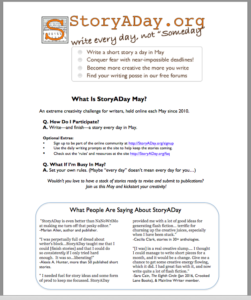
Likewise, if you frequent a literary salon, coffee shop or grungy cafe full of secret writers, as long as it has a noticeboard, why not take one along with you and spread the word?
Remember, Peer Pressure Is Good, kids!
[South Park’s Trey Parker and Matt Stone] revealed that although they brainstorm and develop individual funny scenes, the key to turning those scenes into an actual story is in making sure that each scene causes the next scene to occur.
…[they] developed a very simple litmus test for determining whether they had achieved the desired causation between scenes, by seeing whether one of two words could be inserted between each scene:
“Therefore” or “but”
via Writer Unboxed » Story Lessons from South Park.
This seems like a wonderful lesson for short story writers.
We don’t tend to think in scenes (especially in a first draft), but applying this test to your story revisions, will make the difference between it being ‘a bunch of stuff that happens’ and ‘an actual story that pulls readers from the first word to the last and leaves them daydreaming about your characters later’.
Key point: as you revise (or draft) your short story, think about everything that happens and whether each is linked by a ‘therefore’ or a ‘but’.
Read the source article for four more lessons on storytelling from South Park.
All this to say, You Be You. You Write You. It is said in Ye Olde Hallowed Annals of Writerly Bull that Thou Shalt Write The Book of Thy Heart. Truly. Do. Because life as a professional artist is HARD. You have to delight in what you’re writing and slaving away over because there are moments when that’s all you have. Take your craft deadly seriously, but not yourself, and not necessarily your genre. Wink at it, have a total blast, revel and wallow, and be only as indulgent as your editor allows. Try to be objective, and don’t be hurt if people think your cup of tea tastes like poo. With any luck, passion, love and creativity will shine through. For my part, I can only hope the wild expanse of whatever foggy moor I’m frolicking in will bring loyal readers, who don’t mind the eerie abandon, back time and again to my dark and stormy night.
Leanna has a very good point.
Are you writing what you love?
First, some questions:
Obligatory StoryADay promo: writing a story every day for a month drives you to try new things, desperate measures, genres and voices you’ve never allowed to fly free before. Try it.
You might find your true voice and your true love lurking underneath all those stylized and ‘commercial’ things you think you ought to be writing.
That way lies fulfillment and riches (well, I can’t guarantee the riches, but I’m fairly certain they won’t come if you hate what you’re writing!)
I’m old enough and experienced enough to know when I’m reading to avoid. And then you gotta get back to work. And I also know — you get old enough, you know when you’re forcing the writing, so you need to go hit the books.
via Junot Díaz Hates Writing Short Stories – NYTimes.com.
A couple of years ago I discovered Ray Bradbury’s prescription for creativity and vowed to read more short stories. Soon I was drowning in ideas. This is the second half of what Junot Diaz is talking out here.
But Diaz makes an really interesting point in the first half of the quote.
Sometimes we ‘read to avoid’.
How do you balance the reading and writing parts of your life? What is the most productive reading you do? The least productive? Share your thoughts in the comments, below. Let’s talk about this!
Try to make your time matter: minutes and hours and days and weeks can blow away like dead leaves, with nothing to show but time you spent not quite ever doing things, or time you spent waiting to begin.
via Neil Gaimans Journal.
This except comes from a compendium of New Year’s Wishes from the master of modern storytelling, and champion of creatives, Neil Gaiman.
All of the New Year’s wishes are inspirational but this one struck me particularly.
So try.
Try to do something creative today.
Then do the same tomorrow.
It’s worth it. I promise.
Need help getting started? Breaking Writers’ Block: A StoryADay.org Guideis chock-full of 60+ suggestions for ways to get started, even on the hardest day.
- The heroine/narrator is revealed to be a cat, dog, car, possum, tree or ghost!
- A partner’s mysterious arrangements turn out to be for a surprise party
- The perpetrators murder plan backfires and s/he eats the poison
- A woman meets up with a handsome “stranger” for a steamy rendezvous and it turns out to be her husband
- Someone nervous about a first day at school turns out to be the teacher; or about a wedding, the vicar; or an interview, the interviewer.
- A woman spots her boyfriend/man of her dreams with a beautiful blonde lady – who turns out to be his sister
- Anything involving twinsA murder/death actually turns out to be part of a play rehearsal
via Fast Fiction Guidelines – thats life!.
This is a great list of plot twists to avoid, found in the Writers’ Guidelines for an Australian magazine.
(The rest of the guidelines are good, too. I like the bit where they point out that too many characters and a story gets confusing. They recommend topping out at four.)
Although, it has to be said, the thrawn and perverse side of me is very tempted to write a series of stories in which one or all of these things happen, just to see if I could have fun with them. (Hey, the poison one worked for The Princess Bride…)